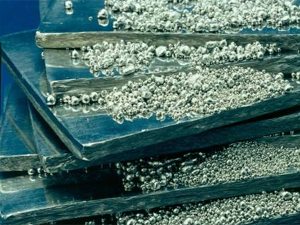
[miningmx.com] – THE effect of news-flow, both good and bad, on JSE
platinum shares has been interesting to watch, especially today when Aquarius
Platinum, Lonmin, and Anglo Platinum had news to share.
Lonmin has been one of the sector’s ‘best’ performers this year. Shares in the
company had “only’ shed 20.8% since the beginning of the year until the
announcement of an unspecified problem at its Number Two furnace.
The share was subsequently hammered, down 7.5%, notwithstanding the optimism
that some analysts have about Lonmin, including SBG Securities, Justin Froneman,
who stuck by his view that the company’s full-year production target of 680,000
ounces would not be disturbed by the event.
Others are less optimistic. “We always suspected Lonmin would fail to meet its sales
target (660,000 ounces). This is disappointing and will impact the company’s earnings
recovery,’ said Nick Hatch of Westhouse Securities.
In comparison, Aquarius Platinum gained nearly 10% on the back of more promising
production news in its third quarter. The counter had been the sector’s worst
performer so far this year; its shares down 38% to R5.56/share.
It narrowed its third quarter net loss to $1.6m from $9.4m in the third quarter of the
previous financial year, took down total cash costs nearly a third, and recorded an
operating cash inflow of $29m.
In fact, the company’s net cash position is the first in 15 months. “Proof of its
improving operational performance,’ said an analyst. The group cash balance as of
the end of the quarter came in at $93m.
If anything, the reactions as reflected in the share prices reveal the jitters. Negative
surprises are not welcome. Amplats ticked warily down 1.73% after it announced it
had still not concluded consultations with the South African government and unions on
plans to mothball up to 400,000 ounces a year of productive capacity.
This will be an important announcement only if, as BMO Capital Markets remarked in
a recent note, government intervention could see less drastic restructuring of Amplats’
output. The cut to productive capacity, in other words, has already been factored into
the platinum price.
Should it surprise investors and continue to pump more metal into the market than
expected, then the all important platinum price is likely to sink further.
The main factor influencing the platinum price is European auto demand. It continues
to decline falling 8% year-on-year in the 12 months to February. The European auto
sector represents a fifth of global platinum demand.
At the end of the day, it’s the platinum price that matters.
Aquarius Platinum’s improvements operationally are highly encouraging for the stock
but the company is realistic.
“While our operational performance improved, the operating environment remained
particularly challenging across most disciplines and was exacerbated by the significant
drop in dollar metal prices post the period end,’ said Jean Nel, Aquarius Platinum CEO
in notes to the quarterly production figures. “There appears little cause for optimism
about the sector’s immediate prospects,’ he added.
“The weak rand and surplus near-term supply/demand balances continue to suppress
the platinum price,’ said BMO Capital Markets in a recent note.
“The two main anticipated drivers for demand expansion are increasing European
demand and platinum substitution for palladium. However, both are likely to take 18
months plus to manifest,’ it said.











